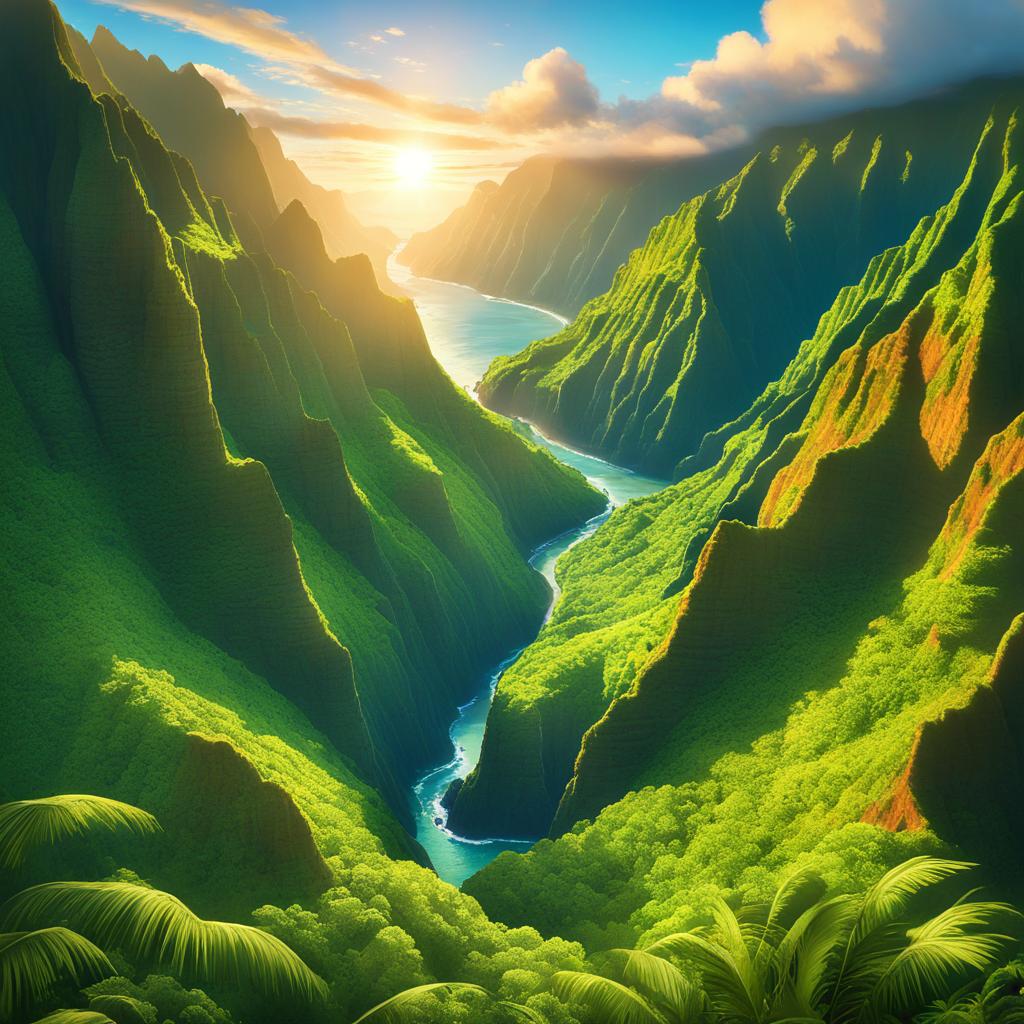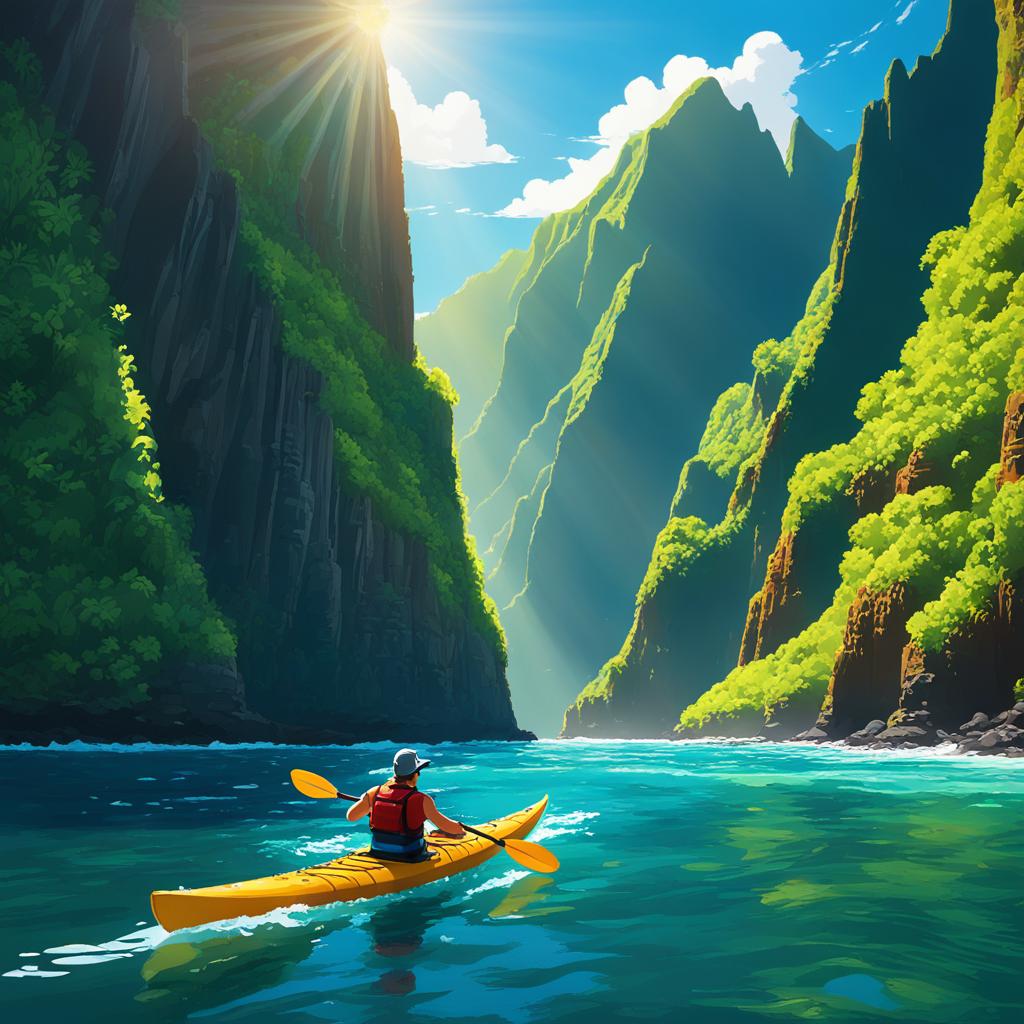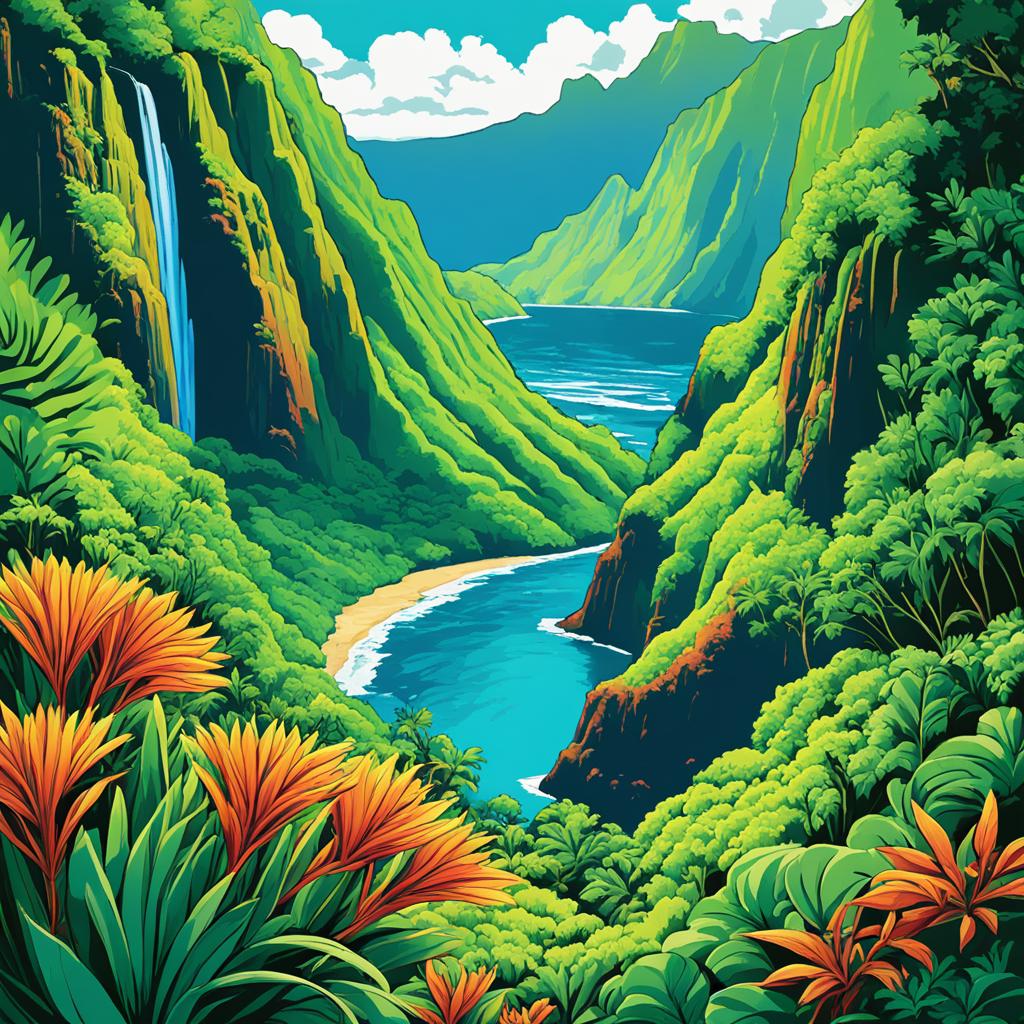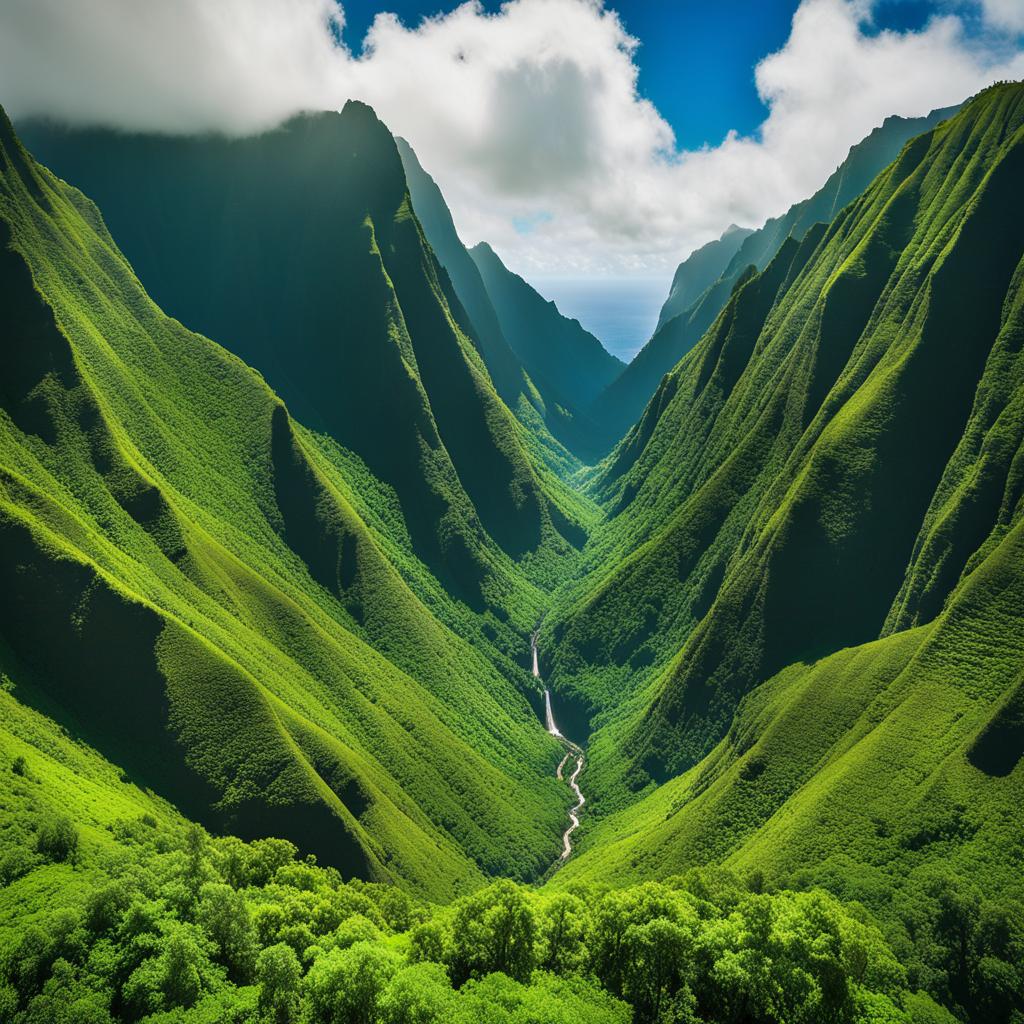Have you ever wondered about the meaning behind the name “Kalalau”? This captivating word holds a significant place in Hawaiian culture and is closely tied to the breathtaking Na Pali Coast on the island of Kaua’i. As you delve into the rich history and natural beauty of this enchanting destination, you will begin to unravel the true essence of what Kalalau signifies in the Hawaiian language.
But first, let’s take a moment to picture a place where towering cliffs meet the deep blue sea, and secluded beaches dot the rugged coastline. The Na Pali Coast, known for its awe-inspiring beauty, captivates the hearts of all who visit. And nestled within this mesmerizing stretch of land lies Kalalau, a valley that boasts its own unique charm.
Join us as we explore the significance of Kalalau, unravel the mysteries of its name, and discover the wonders that await within its secluded embrace. Get ready to embark on an immersive journey through Hawaiian history, stunning landscapes, and rare wildlife as we uncover the secrets of Kalalau Valley and the Na Pali Coast.
Now, let’s delve into the heart of what Kalalau truly means in Hawaiian and unlock the hidden wonders that lie within.
Na Pali Coast: The Cliffs of Kaua’i
The Na Pali Coast is a captivating coastal area located on the northwest side of Kaua’i. Translated from Hawaiian, “Na Pali” means “the cliffs” or “many cliffs.” This remarkable stretch of coastline is renowned for its majestic cliffs that soar up to 4,000 feet in height and its picturesque deep valleys.
The Na Pali Coast is a natural wonder that has captivated visitors from around the world. Its breathtaking beauty, featuring dramatic cliffs and cascading waterfalls, makes it a must-visit destination for nature enthusiasts and adventure seekers. Whether you’re hiking along the rugged coastal trails, kayaking through the crystal-clear waters, or simply basking in the awe-inspiring views, the Na Pali Coast offers an unforgettable experience.
| Feature | Description |
|---|---|
| Cliffs | Reach up to 4,000 feet in height |
| Valleys | Deep and narrow valleys add to the coastline’s dramatic beauty |
| Waterfalls | Cascading waterfalls create a mesmerizing sight |
| Flora and Fauna | Home to a diverse range of plant and animal species |
The Na Pali Coast is a testament to the raw power and beauty of nature. Its awe-inspiring cliffs, lush valleys, and crystal-clear waters make it a true paradise for outdoor enthusiasts and nature lovers. Whether you choose to admire the coastline from the comfort of a boat or immerse yourself in an exhilarating hike along the trails, the Na Pali Coast promises an unforgettable adventure.
The Beauty and Isolation of Kalalau Valley

Kalalau Valley, located within the Na Pali Coast State Park, is a place of exceptional natural beauty and isolation. Surrounded by cliffs over 2,000 feet high, the valley offers a serene and untouched environment that captures the essence of Kaua’i’s rugged coastline. Its isolation from urban development and the hustle and bustle of modern life allows visitors to immerse themselves in the tranquility and awe-inspiring vistas of this remarkable destination.
Spanning approximately 2 miles in length and 0.5 miles in width, the bottom of Kalalau Valley is relatively flat, providing ample space for exploration and appreciation of the valley’s natural wonders. The cliffs that enclose the valley create a sense of seclusion and privacy, making it an ideal retreat for those seeking solitude in nature.
One of the key factors that contribute to the valley’s stunning beauty is its unique natural environment. Kalalau Valley benefits from an abundance of sun and rain, resulting in lush vegetation and vibrant ecosystems. The valley is home to a diverse range of flora and fauna, with rare and endemic species thriving in this isolated sanctuary.
Flora and Fauna in Kalalau Valley
The isolation of Kalalau Valley has allowed for the preservation of rare and delicate species. The valley is home to endemic plants such as the endangered Dubautia kalalauensis, a native Hawaiian plant found exclusively in this region. Other endangered species, like the Schiedea attenuata, also call Kalalau Valley their home, highlighting the valley’s ecological significance and its vital role in the preservation of Hawaii’s unique biodiversity.
| Flora | Fauna |
|---|---|
| Dubautia kalalauensis (endangered) | Kaua’i Amakihi |
| Schiedea attenuata (endangered) | Kaua’i ‘Elepaio |
| Microlepia strigosa | Hawaiian Happy Face Spider |
| Lipochaeta connata | Blackburn’s Sphinx Moth |
These rare species are just a fraction of the rich tapestry of life found in Kalalau Valley. Exploring the valley’s diverse ecosystems offers a unique opportunity to witness the wonders of Hawaii’s natural heritage firsthand.
In the past, Kalalau Valley served as a home to native Hawaiians who farmed and lived off the land. Today, it stands as a testament to the resilience and adaptability of the human spirit in harmony with the natural world. Visitors who venture into the valley can glimpse into the past and appreciate the deep-rooted connection between the Hawaiian people and their surrounding environment.
Accessing Kalalau Valley: Nature’s Barrier

Due to its rugged terrain, accessing Kalalau Valley can be a challenge. However, there are two main ways to reach this breathtaking destination: by kayak or by hiking the Kalalau Trail.
Kayak Adventure
Kayaking is a popular method of accessing Kalalau Valley, providing a thrilling and unforgettable experience. Launching your kayak from Ke’e Beach, you’ll navigate the crystal-clear waters, exploring secret coves and hidden sea caves along the way.
While kayaking, you’ll have a unique perspective of the awe-inspiring Na Pali Coastline, with its majestic cliffs and cascading waterfalls. Keep in mind that sea conditions can be challenging, especially during the winter months, so it’s essential to check weather conditions and be prepared for rough waters.
Make sure to bring all the necessary equipment, such as a kayak, life jacket, and a dry bag to protect your belongings. It’s also advisable to have some kayaking experience and be comfortable in the water before embarking on this adventure.
The Kalalau Trail
If hiking is more your style, the Kalalau Trail offers an incredible journey through lush valleys and rugged terrain. This 11-mile trail starts at Ke’e Beach and winds its way along the breathtaking Na Pali Coastline, presenting stunning vistas at every turn.
The Kalalau Trail is considered challenging, with steep ascents and descents, narrow pathways, and slippery sections. It is important to be prepared and have proper hiking gear, including sturdy shoes, sunscreen, insect repellent, and plenty of water.
While the trail can be physically demanding, the reward is well worth it. You’ll have the opportunity to immerse yourself in the untouched beauty of Kalalau Valley, with its lush vegetation, pristine beaches, and tranquil waterfalls.
| Access Method | Difficulty | Time | Equipment |
|---|---|---|---|
| Kayak | Intermediate | Varies | Kayak, life jacket, dry bag |
| Kalalau Trail | Strenuous | Full-day | Sturdy shoes, sunscreen, insect repellent, water |
Whether you choose to kayak or hike, accessing Kalalau Valley is a nature lover’s dream come true. It’s important to respect the environment and follow all regulations to preserve the beauty of this pristine wilderness.
Kalalau Valley: A Natural Haven

Kalalau Valley, nestled within the magnificent Na Pali Coast of Kaua’i, is a true natural haven. This remote valley is home to a myriad of rare and endemic species, creating a thriving biodiversity in an untouched environment. Among the remarkable species that call Kalalau Valley their exclusive habitat is the endangered plant Dubautia kalalauensis. This unique plant species is found nowhere else in the world but this valley, making it a precious treasure worth protecting.
But Dubautia kalalauensis is not the only rare species that makes its home in Kalalau Valley. The area is also home to the endangered Schiedea attenuata and other unique plant and animal species that have adapted to this secluded sanctuary.
The relative isolation and untouched natural environment of Kalalau Valley have preserved its stunning beauty, providing a safe haven for these rare species to thrive. Here, away from human disturbances, these plants and animals have found their niche in a delicate balance with nature, creating a captivating ecosystem like no other.
To truly understand the significance of Kalalau Valley as a natural haven, we need to acknowledge the valuable role it plays in the preservation of rare species and the overall ecological well-being of the region.
Rare species found in Kalalau Valley:
| Species | Status |
|---|---|
| Dubautia kalalauensis | Endangered |
| Schiedea attenuata | Endangered |
Life in Kalalau Valley
Camping in Kalalau Valley offers a unique opportunity to immerse yourself in the untouched natural beauty of the area. Designated camping areas near Kalalau Beach provide a serene and picturesque setting for your camping adventure.
One of the highlights of camping in Kalalau Valley is the access to freshwater streams and a small waterfall. These natural features not only provide campers with the opportunity to cool off and bathe, but also serve as a source of fresh water for cooking and washing.
However, it is important to exercise caution when using the water sources. Contaminated water can pose a risk of leptospirosis, a bacterial disease. Visitors should always purify and filter water before using it to ensure their safety.
Exploring the valley’s lush environment, hiking its trails, and camping in the midst of nature make for an unforgettable experience. Just remember to be respectful of the environment and leave no trace of your presence, preserving the pristine beauty of Kalalau Valley for future generations to enjoy.
| Advantages of Camping in Kalalau Valley | Tips for Camping in Kalalau Valley |
|---|---|
|
|
Management and Preservation of Kalalau Valley
Kalalau Valley, located within the Na Pali Coast State Park, is a natural wonder that requires careful management and preservation. The responsibility of maintaining this pristine environment lies with the Hawai’i Department of Land and Natural Resources (DLNR).
To protect the delicate ecosystem and cultural significance of Kalalau Valley, the DLNR enforces strict regulations. These include the implementation of a permit system for camping and hiking activities. By managing the number of visitors, the DLNR aims to ensure that the natural beauty of the valley remains unspoiled.
The preservation efforts also involve educating visitors about the importance of respecting the environment and adhering to Leave No Trace principles. These guidelines emphasize minimizing human impact, such as proper waste disposal and staying on designated trails. By promoting responsible practices, the DLNR seeks to preserve the beauty of Kalalau Valley for current and future generations to enjoy.
With effective management and preservation strategies in place, the Na Pali Coast State Park, including Kalalau Valley, can continue to serve as a haven for biodiversity and a sanctuary for rare species. Through the dedication of the DLNR and the cooperation of visitors, this natural gem will thrive for years to come.
FAQ
Q: What does “Kalalau” mean in Hawaiian?
A: “Kalalau” is a word in the Hawaiian language that refers to a specific location on the island of Kaua’i. It is also the name of a valley and beach within the Na Pali Coast.
Q: What is the Na Pali Coast?
A: The Na Pali Coast is a stunning stretch of coastline on the northwest side of Kaua’i. Translated from Hawaiian, “Na Pali” means “the cliffs” or “many cliffs.” It is known for its towering cliffs, deep valleys, and beautiful beaches.
Q: Where is Kalalau Valley located?
A: Kalalau Valley is located within the Na Pali Coast State Park on the island of Kaua’i in Hawaii. It is known for its natural beauty, isolation, and rich biodiversity.
Q: How can I access Kalalau Valley?
A: The only legal ways to reach Kalalau Valley are by kayak or by hiking the Kalalau Trail. Access by motorized vehicles is not possible due to the rugged terrain and steep cliffs.
Q: What rare species can be found in Kalalau Valley?
A: Kalalau Valley is home to many rare and endemic species, including the endangered plant Dubautia kalalauensis. Other endangered species, such as Schiedea attenuata, can also be found in the area.
Q: Can I camp in Kalalau Valley?
A: Yes, camping is allowed in designated areas near Kalalau Beach. Freshwater streams and a small waterfall provide bathing and washing facilities for campers. However, precautions should be taken to prevent leptospirosis from contaminated water.
Q: Who is responsible for the management and preservation of Kalalau Valley?
A: The maintenance and preservation of Kalalau Valley, as part of the Na Pali Coast State Park, are the responsibility of the Hawai’i Department of Land and Natural Resources (DLNR).
